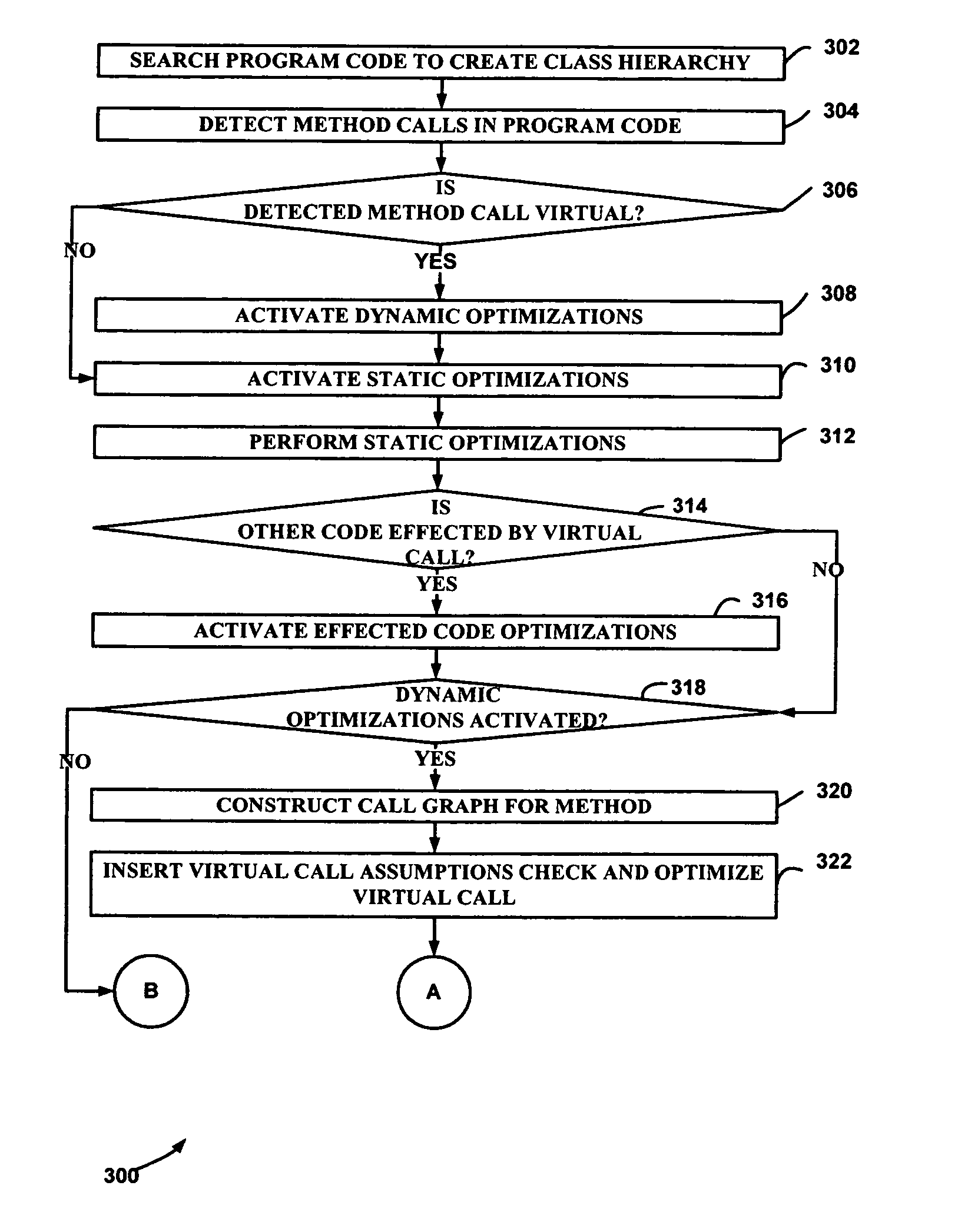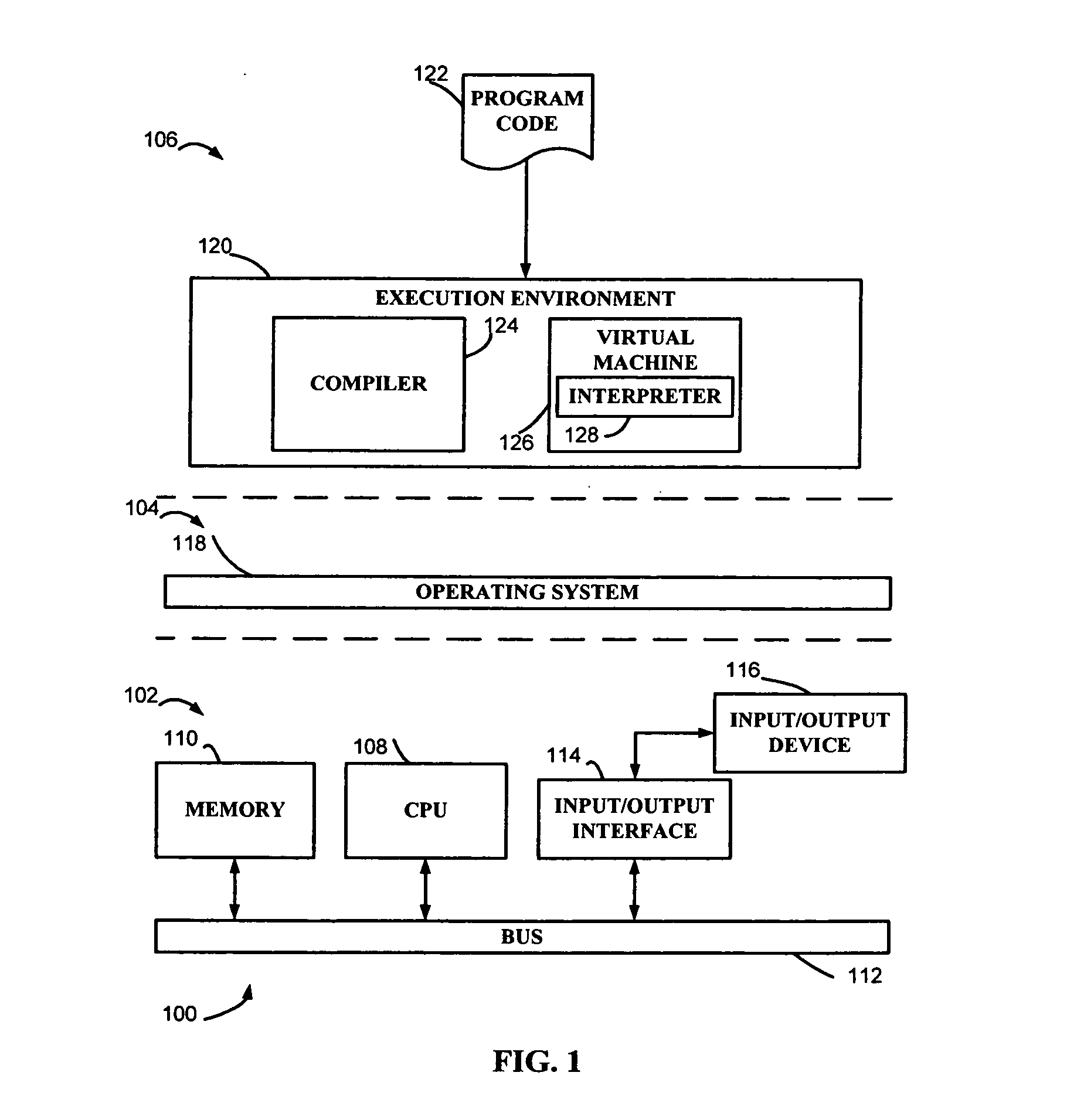Method for computer program optimization in a dynamic compilation environment
a computer program and dynamic compilation technology, applied in computing, instruments, electric digital data processing, etc., can solve the problems that static call graphs and known techniques based on static class hierarchy assumptions are not valid for computer program code dynamically compiled, so as to reduce the options for optimization during compilation and reduce adverse program performance
- Summary
- Abstract
- Description
- Claims
- Application Information
AI Technical Summary
Benefits of technology
Problems solved by technology
Method used
Image
Examples
example 1
Loop Invariants
[0047] The example below illustrates a case where the call to the method value in the method CalculateTotal is virtual since the method defined in either class A or class B can be used depending on the type of the array element a that is the receiver of the call. As a result of this, the expression this f (referring to the class variable f of the class receiving the call) cannot be taken out of the loop for optimization (which would result in fewer of these calls being made thus reducing time and resources for execution of the method) since it is not known if the virtual call will modify this value.
class A{ int f = 5; int g = 10; int value ( ) {return this.f;} int CalculateTotal (A[ ] a) { int total = 0; for (int I=0; i total = total +a[i].value( ); Total = total / this.f;} }}class B extends A { int value( ) {return this.g;}return total; }
[0048] In the optimized example of the method CalculateTotal the virtual call is changed using techniques kn...
example 2
Global Common Sub-expressions
[0049] The example below illustrates the case where a sub-expression calculation common to multiple lines cannot be assumed to have the same result. In this case a virtual call between the two common calculations means that a single calculation cannot be used since the virtual call could cause a numerical change in one of the variables used in the calculations.
t1=o.f+5;
o.m( );
t2=o.f+5;
[0050] The optimized example below shows the virtual call remaining but the common sub-expression has been moved before the virtual call and is only performed once. The assumption check before the setting of the second variable using the common expression ensures that the second variable is set correctly if the assumption is false.
temp=o.f+5;
t1=temp;
o.m( );
if (assumption for method m=false)
temp=o.f+5;
t2=temp;
example 3
Global Constant Propagation
[0051] The example below illustrates the case where a variable value is set and then the variable is called again after a virtual call. The variable is not directly changed in the code but may be changed by the virtual call and thus the exact value of a second variable relying on the previously set variable cannot be exactly determined.
o.f=5;
o.m( );
t1=o.f+5;
[0052] The optimized example below shows the variable t1 being set to a constant 10 when the assumption that method m does not effect the variable o.f is correct.
o.f=5;
o.m( );
if (assumption for method m=false)
t1=o.f+5;
else
t1=10;
PUM
 Login to View More
Login to View More Abstract
Description
Claims
Application Information
 Login to View More
Login to View More - R&D
- Intellectual Property
- Life Sciences
- Materials
- Tech Scout
- Unparalleled Data Quality
- Higher Quality Content
- 60% Fewer Hallucinations
Browse by: Latest US Patents, China's latest patents, Technical Efficacy Thesaurus, Application Domain, Technology Topic, Popular Technical Reports.
© 2025 PatSnap. All rights reserved.Legal|Privacy policy|Modern Slavery Act Transparency Statement|Sitemap|About US| Contact US: help@patsnap.com



